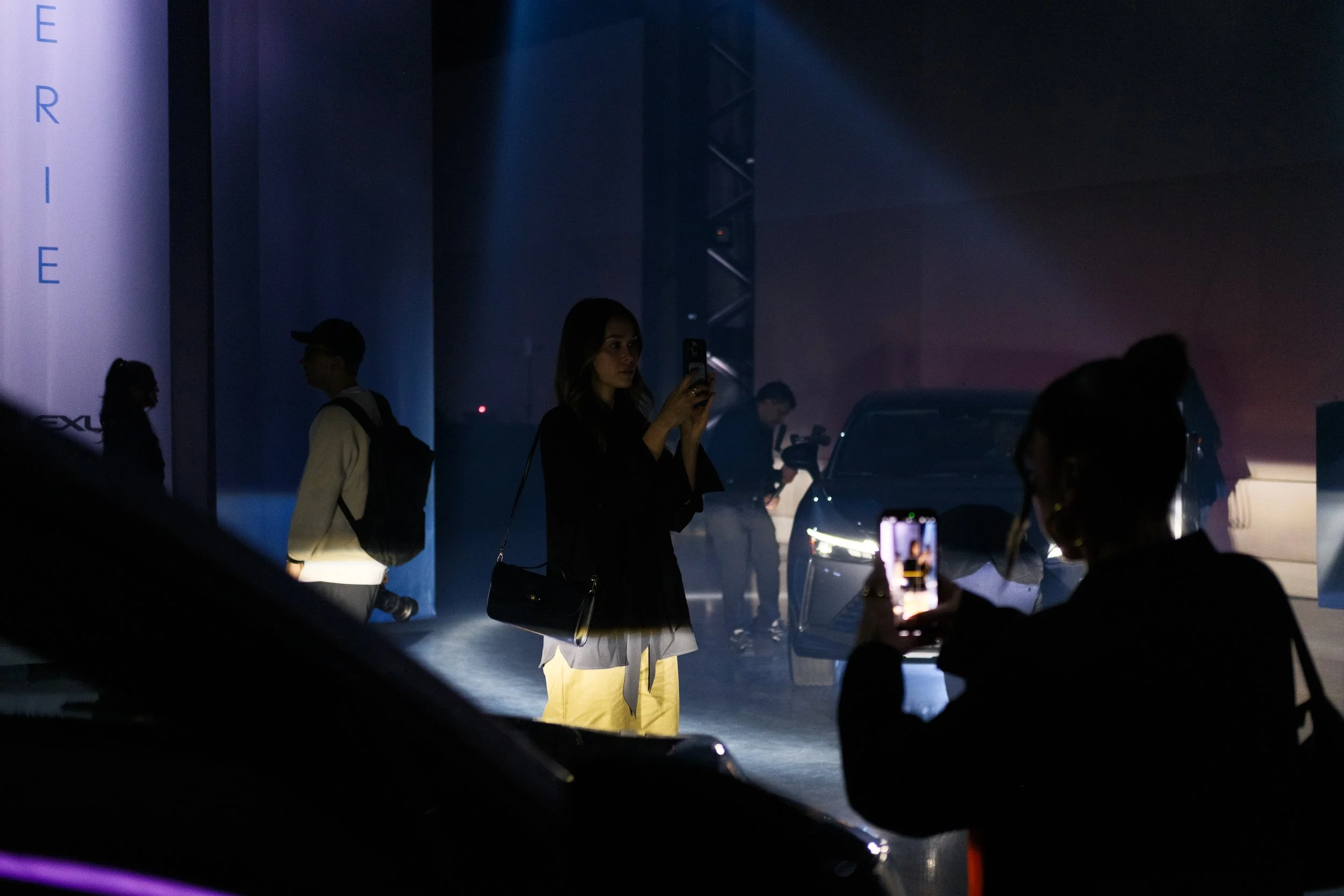Lexus | Takumi Keiken
Experiential Design & Editorial Art Direction (Montreal)
A celebration of craftsmanship where every element, from the lighting to the layout, was treated as a masterwork.
As the Senior Experiential and Visual Designer, I helped Lexus bring its Takumi philosophy to life in Quebec through a sensory-driven event shaped by both Japanese tradition and local culture.
Experiential Design
A spatial expression of the Takumi philosophy
My role was to shape the environment through visual systems, materials, and atmosphere. This wasn’t a typical showroom or pop-up. We set out to create a space that invited people to slow down, engage with intention, and experience craftsmanship in motion.
At the heart of the space were open-air studio installations where local artists worked live, demonstrating their own Takumi. Each moment of making was visible to guests — precise, focused, and deeply personal. These stations became living reflections of the event’s theme.
What made it more powerful was how the experience was captured. Local content creators organically documented these moments, each bringing their own creative lens. Their interpretations — intimate, unpolished, and genuine — became another layer of Takumi, showing mastery in both subject and storytelling.
Lighting was deliberate. Cool ambient tones drawn from Lexus’s Structural Blue shaped the rhythm of the room, casting soft shadows and guiding guests with intention. Materials were chosen to reflect a dialogue between cultures — the minimalism of Japanese aesthetics paired with Quebec’s industrial textures. Brick, iridescent finishes, and steel helped ground the experience in place. Each design decision, whether spatial or sensory, was made to express the discipline and intentionality behind Takumi mastery — not just in what guests saw, but in how they experienced it.
The Takumi Event Book
A printed piece that performed as much as it informed
This wasn’t just a printed handout. The Takumi event book was imagined as a tactile object that embodied the philosophy of the experience itself — intentional, layered, and crafted with care.
The spine was Japanese-bound by hand, stitched with Lexus’s signature Structural Blue thread. This thread wasn’t just functional; it connected the book to the same innovation and tradition reflected in the event space.
A laser-cut window on the front cover offered a glimpse of the Lexus spindle grille beneath a metallic blue underlayer. This sculptural moment hinted at complexity and depth — two core principles of Takumi design.
Inside, every spread was influenced by the tension and harmony found in Japanese poster design. The asymmetric layouts gave each page a sense of quiet energy and balance.
Along the spine, a soft gradient of Lexus blue bled into the page edges, mimicking the ambient lighting from the physical space and extending that mood into the hand-held format.
Chapter dividers were made from vellum with floating, translucent titles that revealed content slowly and invited the reader to pause. Each page turn became a sensory moment.
Editorial pacing was slowed by generous use of negative space, layering, and texture. This wasn’t meant to be flipped through quickly, but absorbed deliberately — echoing the same patience and mastery that defines Takumi.
The book avoided flashy materials or luxury clichés. Instead, it spoke with restraint and purpose, offering a quiet confidence that matched the spirit of the brand and the event.
Immersive Dining Experience
The Sensory Table
The event culminated in a slow, deliberate dining experience designed to bring the Takumi philosophy to life through taste, sound, and light. Inspired by omotenashi — the Japanese concept of wholehearted hospitality — the dinner invited guests to be fully present, rewarding attention and stillness with layers of sensory detail.
Chef Jérémie Falissard created a four-course menu that mirrored the event’s theme of craft and intention. Each course was introduced with a shift in the environment. Overhead, a suspended fabric sculpture carried projection-mapped visuals that evolved from wind to water to flame. The lighting changed with each dish, and a custom soundtrack followed the emotional arc of the meal, deepening the connection between taste and perception.
For the main course, the experience took an unexpected turn. Guests were blindfolded and asked to explore the dish through touch and smell before seeing it. This deliberate disruption shifted focus away from presentation and toward the essence of the ingredients — a moment that mirrored the spirit of Takumi: mastery through presence, not spectacle.
The printed menu reflected this interruption with a deliberate blank space in place of the course title. The omission created mystery and anticipation, encouraging guests to experience first, interpret later.
I led the spatial and visual direction of the dining room, ensuring it felt distinct from the gallery space while still carrying the same visual DNA. The room was moody and quiet, wrapped in deep ambient blues. The fabric sculpture above the table doubled as a projection surface and atmospheric element. Tabletop lighting was soft and haloed, making each plate feel intentional and grounded.
Menus were printed on natural linen-textured stock with quiet typographic rhythm. The ceramics were intentionally mismatched, and the glassware was made from black frosted material — every tactile detail added a layer of curiosity and contrast.
This dinner wasn’t just a moment of hospitality. It became the emotional heart of the experience — a living metaphor for the Takumi mindset, where discipline, care, and subtlety leave the most lasting impression.
Cultural and Brand Impact
We knew this couldn’t feel like an outside brand showing up in Quebec. It needed to be a collaboration, and the results showed that the approach worked.
$102,000 in earned media from a select group of high-performing creators
Over 5 million impressions across digital and on-site touchpoints
110 pieces of organic content that generated 1.9 million impressions without any paid amplification
Lexus’s presence felt authentic, not imposed, thanks to co-creation with local voices and thoughtful design decisions














